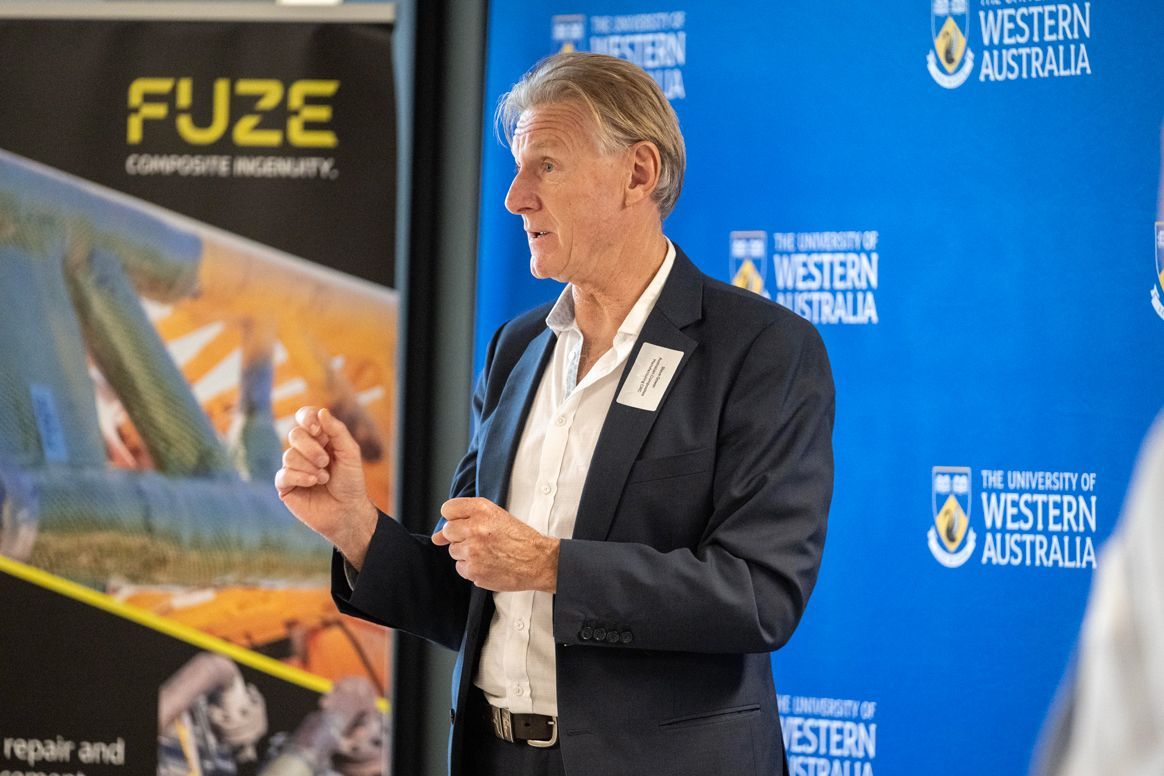ACM CRC Launches Transformative Project to Standardise Composite Material Repairs for Steel Structures
Above: Dr Steve Gower at UWA to launch the project with partners Fuze and UQ.
The Advanced Composites Manufacturing Cooperative Research Centre (ACM CRC) has launched an innovative project led by FUZE Solutions and the University of Western Australia, in collaboration with the University of Queensland, to establish an industry standard for repairing and reinforcing steel structures using composite materials. This initiative aims to define best practices, overcome barriers to adoption, and pave the way for widespread industry acceptance.
A Solution for Critical Industries
Industries such as oil and gas, energy production, utilities, mining, marine and communications depend on durable, cost-effective methods to maintain and extend the life of their infrastructure. Composite materials offer a compelling solution with benefits including chemical compatibility, lightweight construction, stiffness, toughness, corrosion resistance, modularity and adaptability for cold works and incremental applications.
Project Goals and Methodology
The ACM CRC project focuses on developing robust methods for designing and evaluating composite repairs. Key activities include:
- Conducting structural calculations and finite element analysis modelling.
- Implementing scale testing procedures and establishing performance criteria.
- Developing long-term testing programs and inspection protocols.
- Integrating Structural Health Monitoring (SHM) techniques to ensure sustained performance.
These efforts will be conducted within a risk-based framework that considers the criticality of structural elements and overall system integrity.
Addressing Barriers to Adoption
Peter Butt, Technology Manager at FUZE and ACM CRC Project Lead, explained the current challenges:
“The design and assessment processes for composite repairs are not widely understood outside a niche group of experts. This lack of understanding leads asset owners and regulators to favour traditional, more costly steel repairs over innovative and cost-effective composite solutions.”
Butt emphasised that the project’s ultimate goal is to provide clear, standardised guidelines:
“A new standard will give asset owners and regulators confidence in the reliability of composite repair methods, reducing perceived risks and encouraging broader adoption across industries.”
Incorporating Proven Technologies
The project will draw on established aerospace technologies and industrial experience to create a comprehensive framework for steel asset repairs.
Associate Professor Farhad Aslani, UWA Lead for ACM CRC at the University of Western Australia, noted the project’s multidisciplinary approach:
“We will review existing research and practices from aerospace and civil engineering applications, validate techniques through experimentation, and develop design and assessment protocols. Collaboration with industry stakeholders will ensure that the solutions are practical and field-ready.”
Driving Efficiency and Innovation
By streamlining approval processes and improving cost efficiency, the initiative aims to reduce repair timelines and extend asset lifespans.
“Standardisation will enable the widespread use of composite repairs, driving growth in local manufacturing and supply chains,” said Dr Steve Gower, CEO of ACM CRC.
“This project will reduce operating costs for asset owners, improve production uptime, and position Australia as a leader in advanced composites technology.”
The immediate focus of the ACM CRC-funded project is to gather industry requirements, identify cross-sector alignment, and develop a framework for adopting standardised repair methodologies.
For further details or to express interest in participating, please
contact ACM CRC.





